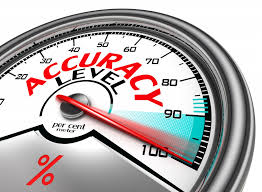We are only a few days into a new quarter, but I’m deep into forecast reviews. We are both discussing performance on last quarter’s forecast and doing the forecast for the current quarter.
I was talking to one manager about his forecast. His team typically pursued very large deals. The average deal size was well over $1M, they were typically long cycle (12-18 months).
Here’s our conversation, see if you can spot the problems:
Manager: “We did pretty well last quarter. At the beginning of the quarter, my forecast showed we would deliver about $20M. We beat that, barely, delivering $20.7M. I’m really happy with our performance and forecast accuracy.”
Me: “Well, you needed to deliver at least $20M in orders, it’s great that you made that, but I’m not sure I understand what you mean by forecast accuracy.”
Manager (a little huffy): “What are you saying, we beat the number I committed to. What’s wrong?”
Me: “Well as I look at the deals you originally committed to achieve $20M, only about 50% of them came in for roughly $10M. $3M that you committed to win as part of that $20M you actually lost. $7M has slipped into this and later quarters. So your forecast was actually only 50% accurate—even though you made the order target……”
Me, continuing: “So what concerns me is how you made your number. 15% of what you thought was locked in for a win, you lost. Another 35% has slipped. Then there was the $10M that you had not forecast that you used to fill the gap. $8M of that was stuff that was in your pipeline or pulled from this quarter, $2.7M were basically bluebirds…..”
Manager: “But you don’t get it, I made the revenue number!”
Me: “Of course you made the number, but look at how you made the number. 50% was highly exposed, you scrambled and were lucky. 100% forecast accuracy is impossible, but you completely misread at least 15% of what you committed, you were certain you would win, but you lost it. What would you change to reduce that in the future?”
Me, continuing: “There’s another way to look at this. You did a tremendous job of scrambling and making things happen that weren’t in the forecast. If you had been able to do a better job in achieving what you had forecast, and brought some of these other opportunities in, you might have really outperformed the goal, achieving much more than the $20M.”
Manager: “Wow, I get it, I really could do better and get my team to do better. What can I do? How do I start…..”
We went on to explore what had happened, thought about strategies to more effectively manage the business in the future.
I was really tough on this manager, but I knew he wanted to get better and would want to learn more about how to improve.
But he fell victim to some of the same thinking I see in too many sales managers and sales people. They become so focused on the number, they fail to understand how they make the number and what they can do to improve that performance. It’s understanding this that drives top sales performance.

Hi Dave
Great topic as always and one of my focal points. I see this as possibly one of the most important Metrics. I’d argue that it is #1 indicator of how well you know your “business”
Too many simply see the number and not the content of that number.